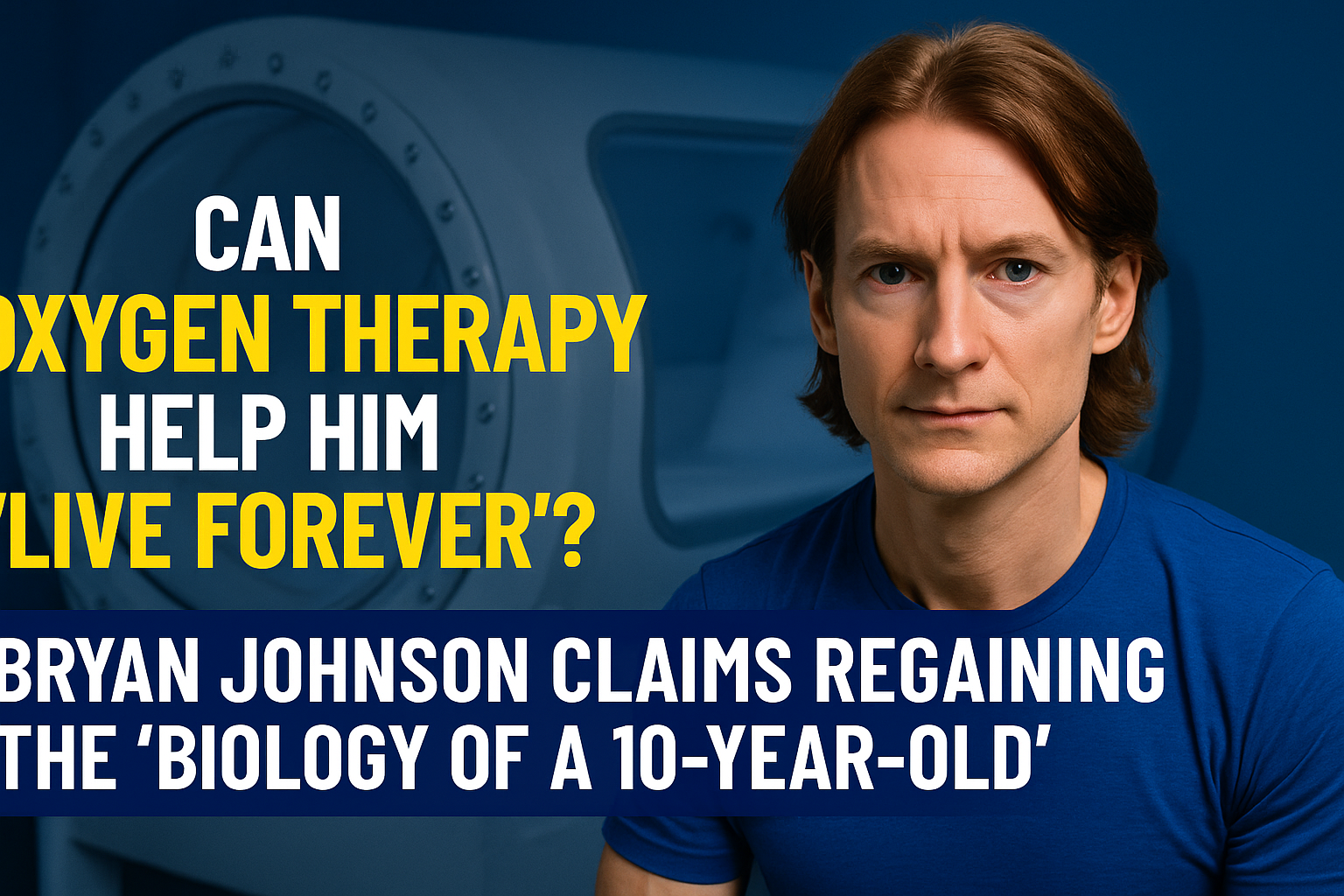Tech entrepreneur and longevity enthusiast Bryan Johnson has once again stirred public debate after claiming that his recent 90-day hyperbaric oxygen therapy experiment gave him the “biology of a 10-year-old.”
Known for his multi-million-dollar anti-aging routines and strict Blueprint protocol, Johnson is no stranger to extreme biohacking. But this latest revelation is among his most ambitious — and most controversial.
What is Hyperbaric Oxygen Therapy?
Hyperbaric Oxygen Therapy (HBOT) involves breathing pure oxygen in a pressurized chamber, allowing more oxygen to dissolve into the bloodstream and reach tissues throughout the body. Originally used to treat decompression sickness and wound healing, HBOT is now being explored for its potential in neuroregeneration, immune modulation, and even age reversal.
A growing number of longevity-focused clinics now offer HBOT as a rejuvenation treatment, and some studies suggest it may help improve:
- Mitochondrial function
- Telomere length
- Brain perfusion and cognition
- Inflammatory markers
However, most evidence is preliminary, and protocols vary widely in duration, pressure, and frequency.
Johnson’s Protocol: 90 Days to Youth?
In a recent post on X (formerly Twitter), Johnson claimed that after undergoing daily HBOT for 90 days, his biomarkers resembled those of a healthy 10-year-old. Although specific data points weren’t immediately disclosed, his claims reference improvements in skin elasticity, cellular energy production, and immune profile.
“I have the biological profile of someone in middle school,” Johnson wrote. “Oxygen is the forgotten molecule of rejuvenation.”
His custom-built hyperbaric chamber is part of a larger personal investment exceeding $2 million annually, which includes gene therapy, plasma transfusions, over 100 daily supplements, and a regimented lifestyle involving calorie restriction, early time-restricted eating, and intense data tracking.
Science or Speculation?
While HBOT is being studied in aging-related research — including a 2020 Israeli study that showed increased telomere length and decreased senescent cells — scientists caution that more rigorous, controlled trials are needed. The use of HBOT for general longevity is still considered experimental, with potential risks like oxygen toxicity, barotrauma, and oxidative stress.
Dr. Nir Barzilai, a leading researcher in aging science, has praised HBOT’s promise but warns against overselling:
“It’s an exciting area, but we need peer-reviewed replication before calling it a fountain of youth.”
The Bigger Picture: Is Johnson Helping or Hurting the Movement?
Some experts commend Johnson for pushing boundaries and investing in cutting-edge interventions that others won’t try first. Others worry that such claims — without transparent clinical validation — may confuse or mislead the public.
Still, Johnson defends his approach:
“I’m not doing this to be extreme. I’m doing this to build a better health model for humanity.”
Conclusion: Breath of Life or Buzzword Therapy?
Whether or not HBOT truly gave Johnson the physiology of a child remains to be seen. But his experiment has sparked valuable conversations about the future of personalized medicine, access to rejuvenation therapies, and the role of quantified self-experimentation in modern healthcare.
For now, hyperbaric oxygen therapy may remain a promising tool in the biohacker’s arsenal — but not a silver bullet.
Disclaimer: Always consult with a medical professional before beginning any medical or experimental treatment, including HBOT.



